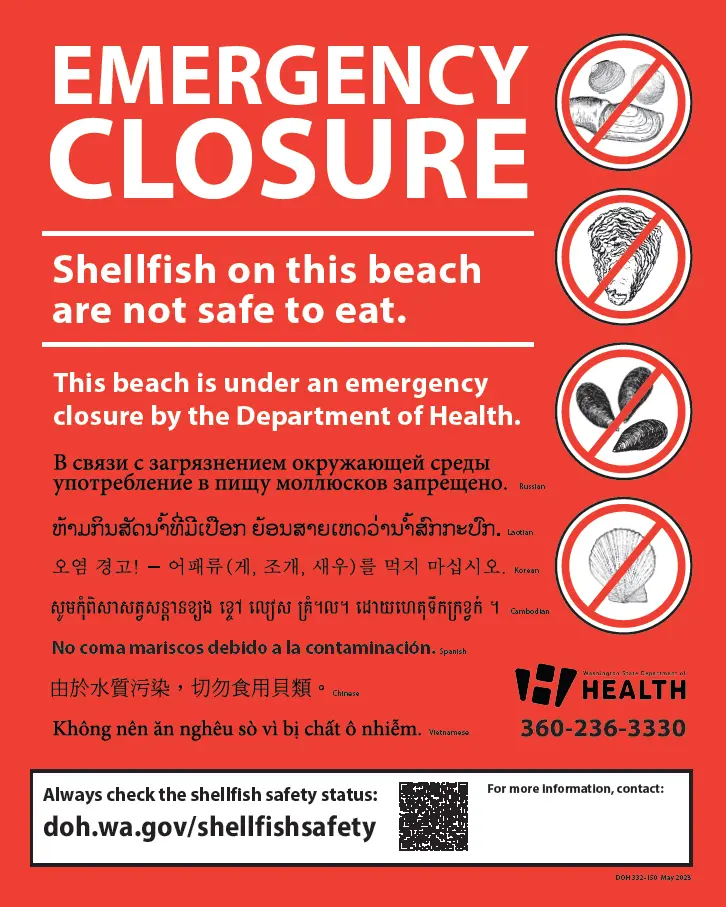Keeping WA Shellfish Safe: Why Biotoxin Testing Is a Public Good
- Greene Team

- Sep 25, 2025
- 2 min read
Updated: Sep 29, 2025

Monitoring, closures, and funding strategies to protect public health and a vibrant shellfish industry

Algae that produce toxins are always present in Washington's marine waters. Most are harmless—but during harmful blooms, shellfish like clams, oysters, geoducks, and mussels can accumulate toxins that cause serious or even fatal illness. Cooking or freezing does not remove the danger.
Because toxin levels vary with environmental conditions, the state closes shellfish harvest areas when risks are high to protect public health.
Over the past century, water temperatures in Puget Sound have risen 0.5–1.0°C, with surface waters in Hood Canal warming more than 1.4°C. Winter closures used to be unheard of, but biotoxin closures now span months. In 2023, closures in parts of Whatcom County extended until late November and resumed in May 2024, compared to the historical June–September season. Similar trends continued in 2025, including recent closures in Pierce County, which lifted restrictions in September.
Monitoring and Closures Protect Public Health
The Department of Health’s Public Health Lab has increased testing in response. By mid-2024, the Lab had tested more shellfish samples for biotoxins than in any year since 2016. This surge in testing has strained budgets, with health officials asking, “How do we save some money and still maintain the same level of safety?”
The stakes are enormous. Washington produces the nation’s largest commercial shellfish harvest, generating over $77 million in sales annually. Roughly 300,000 people harvest recreationally. Now, paralytic shellfish poisoning (PSP) closures are occurring about a month earlier than historically, and continued monitoring is critical to keep shellfish safe for human consumption. That’s why Washington invests in one of the strongest monitoring programs in the nation.
In 2024, the Department of Health tested more than 3,400 samples from 120+ sites. This early warning system prevents illness, protects consumers, and keeps markets open. But increased testing frequency comes with increased costs.
Funding Biotoxin Testing as a Public Good
To help address funding challenges, the Legislature asked Greene Economics to review the Department of Health’s shellfish fee structure and funding options, including commercial licensing and biotoxin testing fees. Our report recommended that the state fully fund biotoxin testing as a public good (~$674,000 annually) rather than passing costs onto growers. This approach supports small producers, preserves industry diversity, and ensures public health protection.
“Biotoxin testing protects everyone—not just shellfish farmers,” said Bea Covington, Principal Economist at Greene Economics. “It safeguards public health, supports industry stability, and ensures equity for Tribal and commercial operations, which is essential to keeping the entire sector viable.”
We also recommended investing in newer, more affordable testing technologies at the Public Health Lab, helping Washington stay ahead of climate-driven changes and continue leading the nation in shellfish safety.
To learn more, view our Shellfish Fee Assessment Summary (PDF). Stay tuned for the full report and case study detailing our analysis and methodology.
.png)


